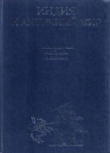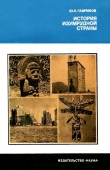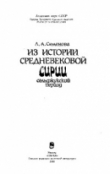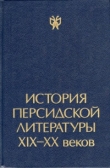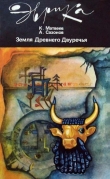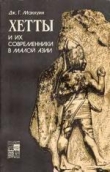
Текст книги "Индия в древности"
Автор книги: Григорий Бонгард-Левин
Соавторы: Григорий Ильин
Жанр:
История
сообщить о нарушении
Текущая страница: 54 (всего у книги 66 страниц)
В целом представляется справедливым мнение видного голландского ученого Я. де Каспариса о том, что характерной чертой индийского влияния в Юго-Восточной Азии была его связь с общеиндийской традицией в противовес многочисленным локальным[2342].
Приведенные в этой главе материалы далеко не исчерпывают всего богатейшего фонда сведений (и письменных источников, и археологии) об историко-культурных контактах Индии в древности. Но и они позволяют представить масштабы связей народов Индии с другими народами Востока и греко-римским миром. Только при учете этого многостороннего процесса можно правильно понять характер древнеиндийской цивилизации, оценить ее вклад в мировую культуру. Ранее популярный в индологии тезис о замкнутом характере древнеиндийской культуры, ее изолированности от культур других регионов древнего мира должен быть пересмотрен.
СПИСОК СОКРАЩЕНИЙ
Айт. – бр. – Aitareya-brāhmaṇa
Артх. – «Артхашастра»
Бр. – уп. – «Брихадараньяка-упанишада»
Вадж.-с. – Vājasaneya-saṃhitā
ВДИ – «Вестник древней истории»
ВЯ – «Вопросы языкознания»
КСИА – «Краткие сообщения Института археологии»
КСИНА – «Краткие сообщения Института народов Азии АН СССР»
Мбх. – «Махабхарата»
НАА – «Народы Азии и Африки»
ПВ – «Проблемы востоковедения»
СА – «Советская археология»
СВ – «Советское востоковедение»
СЭ – «Советская этнография»
ТГЭ – «Труды Государственного Эрмитажа»
Чх. – уп. – «Чхандогья-упанишада»
Шат. – бр. – Śatapathā– brāhmaṇa
ЭВ – «Эпиграфика Востока»
AA – “American Anthropologist”
AAH – “Acta Archeolosrica Hungaricae”
ABORI – “Annals of the Bhandarkar Oriental Research Institute”
AI – “Ancient India”
BEFEO – “Bulletin de l’école française d’Extrême-Orient”
BSO(A)S – “Bulletin of the School of Oriental (and African) Studies”
CII–Corpus Inscriptionum Indicarum.
EI – “Epigraphia Indica”
EW – “East and West”
IA – “Indian Antiquary”
IC – “Indian Culture”
IHQ – “Indian Historical Quarterly”
IHR – “Indian Historical Review”
JA – “Journal asiatique”
JAOS – “Journal of the American Oriental Society”
JASB – “Journal of the Asiatic Society of Bengal”
JBBRAS – “Journal of the Bombay Branch of the Royal Asiatic Society”
JBORS – “Journal of the Bihar and Orissa Research Society”
JESHO – “Journal of the Economic and Social History of the Orient”
JIH – “Journal of Indian History”
JOIB – “Journal of the Oriental Institute”, Baroda
JNSI – “Journal of the Numismatic Society of India”
JRAS – “Journal of the Royal Asiatic Society of Great Britain and Ireland”
ME – “Man and Environment”
SAA 1973 – South Asian Archaeology 1973 (Leiden, 1974)
SAA 1977 – South Asian Archaeology 1977 (Naples, 1979)
SAA 1979 – South Asian Archaeology 1979 (Berlin, 1979)
SBE – Sacred Books of the East
TC – “Tamil Culture”
ZDMG – “Zeitschrift der Deutschen Morgenländischen Gesellschaft”
513
SUMMARY
The monograph India in Ancient Epoch by prominent Soviet scholars Dr. G.M.Bongard-Levin, Corresponding Member of the USSR Academy of Sciences, and Professor G.F.Ilyin covers the Indian history from the Palaeolithic period to the Middle Ages. It embraces an exceedingly wide scope of problems including India’s ethnic history, state system, class and caste structure, village-community, economic development, science, art, philosophy, religion, historical and cultural ties. Wide use has been made of written sources available in Sanskrit, Pali, Prakrits and Greek as well as of data of archaeology, ethnography, linguistics and numismatics.
Modern Indology rapidly forges ahead. This is due to a number of factors, above all, the exceptional interest of the Indian public in the study of their national history and culture. Every year has been bringing interesting discoveries of ancient monuments of the material culture and art, epigraphy documents; new literary texts, philosophical, religious and scientific treatises and pertinent commentaries are being brought into scholarly circulation, monographs on various periods of Indian history are being published. Notable successes in the study of its early stages have been achieved by scholars of many countries. The analysis of historical texts, archaeological and epigraphy data, follows new methods of research. Indology is establishing closer cooperation with other branches of human and natural sciences, revising traditional conceptions and previously adopted datings, specifying facts of political, social and cultural history. It all creates prerequisites for the writing of generalizing and summing-up works based on newly obtained data. The need in such works is fairly great: they are called upon to sum up the results of conducted and stimulate subsequent research.
The objective analysis of processes of the historical and cultural evolution of mankind makes it imperative to consider the contribution of the Indian peoples to world civilization. At present, scholars investigate the problem of typology of ancient cultures of the East and West, Indian material opening up broad prospects to these efforts. A juxtaposition of Ancient Indian phenomena and institutions with their Graeco-Roman counterparts makes it possible to bring out both basic similarity in the evolution of the two civilizations and the specific features of each.
It is common knowledge that it is impossible to understand the present of a country without knowing its past. India is a particularly vivid example: features of distant times have been found to be exceedingly enduring in its social relations and culture. This shows an amazing stability of India’s traditions. A number of features of the past, though rapidly changing, organically enter into the fabric of its modern life. The determining of the place and significance in present-day India of the family, village-community, caste, religion (a far from complete list of social and ideological institutions) largely depends on the level of knowledge of what they were like in the distant past, of how they originated and developed. Nowadays, problems of a country’s history and culture are not only an object of purely academic interest, but one of an acute political dispute. Naturally, the objective study of different aspects of the social and spiritual life of Ancient India is of topical relevance now. An important role in the development of these problems is played by Indian scholars. Some of their works, published in Russian, have been welcomed by Soviet readers but, regrettably, none of them bear a generalizing character. The present monograph is intended to fill the resulting gap.
In the Soviet Union the past 15 years – the period since the publication of the work Ancient India: A Historical Outline, by the same authors (in Russian) – has been marked by notable achievements in Indology: many pages of the history of some Eastern countries directly connected with India have been re-estimated and considerable advances have been registered in Sanskritology, Indo-European studies, Buddhology, Central Asian archaeology and the study of the Graeco-Roman world.
The Introduction briefly outlines the history of study of Ancient India in India itself and in Europe, contains a detailed review of pre-revolutionary Russian and Soviet literature on India and discusses the specific features of the present state of Indology.
The monograph’s three basic parts embrace the main periods of India’s ancient history. The first opens on a description of the Stone Age. Special attention is also given to problems connected with the rise of civilization in the Indus Valley.
An individual chapter touches on questions of the ethnogeny of Northern and Southern India. A particularly detailed treatment is given to what is known as the “Aryan problem” – a set of questions connected with the origin of the peoples which now speak the Indo-Aryan languages, with the time and routes of their migration to India and their relations with its non-Aryan population.
The development of the Ganges Valley, which began in the second millennium B.C., led to the emergence of a new focus of civilization, which held the lead throughout the ancient period since it had come into existence. Of great scientific importance is the fact that the study of the history of this period relies on data of Vedic literature. This imparts greater confidence to judgements about social relations (slavery, varna system), forms of statehood, culture and religion. In accordance with a long-established scholarly tradition, the authors refer to the period in the history of the Gangetic civilization which lasted until the mid-1st millennium B.C. as Vedic.
The second part of the book is devoted to the history of formation of the Mauryan Empire, the specific features of the social relations and culture of the Magadha-Mauryan era, those of the rise and development of Buddhism and Jainism and traces the basic processes of social and spiritual life in Southern India.
The third part, which covers the Kushan-Gupta era, analyzes disputable problems of Kushan chronology and history with due account of relevant recent works by Soviet and foreign scholars. The authors cite data pertaining to the class-caste structure of Indian society and the beginnings of feudalism in India, describe Hinduism, Mahayana, as well as the most important philosophical systems. The concluding chapter is connected with the country’s historical and cultural contacts.
As a whole, the present monograph constitutes a fundamental inquiry reinterpreting many cardinal problems of the history and culture of Ancient India.
ИЛЛЮСТРАЦИИ

Терракотовые фигурки из Мехргарха.

Хараппская печать.
516

Мужская голова. Мохенджо-Даро.

Переулок в Мохенджо-Даро.
517

Модель медной колесницы из клада в Даймабаде.

Терракотовые фигурки богини-матери.
518

Аскет. Махабалипурам.

Терракотовая голова из Каушамби. Музей в Аллахабаде.
519

Будда. Наланда (ступа № 3).

Надпись на колонне из Лумбини.
520

Обучение письму брахми. Терракота. Национальный музей в Дели.

Капитель колонны Ашоки из Рампурвы.
521

Сельские работы. Ступа. Санчи.

Сцена из деревенской жизни. Нагарджуниконда.
522

Фрагмент рельефа из Бхархута.

Каменный рельеф из Бхархута.
523

Фигура льва из Кумрахара.

Подношение дереву Бодхи. Санчи.
524

Ворота ступы. Санчи.

Голова индо-сакского воина. Музей в Матхуре.
525

Статуя Канишки. Музей в Матхуре.

Надпись кшатрапа Шодасы. Музей в Матхуре.
526

Терракотовая фигурка «чужеземца» (II в. до н. э.). Музей в Матхуре.

Голова воина. Музей в Матхуре.
527

Сон Майи – матери Будды. Амаравати.
528

Фигура воина. Эпоха Гупт. Музей в Аллахабаде.

Женщина с зеркалом (I–II вв.). Музей в Матхуре.
529

Будда и воины Мары. Нагарджуниконда.

Царевич Сиддхартха покидает Капилавасту. Нагарджуниконда.
530

Фигура бодхисаттвы. Канхери.

Сцена сельской жизни (I–II вв.). Музей в Матхуре.
531

Каменный рельеф. Музей в Лакхнау.

Голова Будды. Гандхара.
532

Скульптура Будды. Кушанский период. Музей в Матхуре.

Нисхождение Ганги. Южная Индия.
533

Фрагмент Тримурти. Элефанта.

Нарасимха (VII в.). Музей в Аллахабаде.
534

Шива-линга (X в.).

Богиня Тара. 535

Шива. Храм в Пушпагири.

Бюст якшини. Музей в Патне.
536

Игры Кришны. Терракота.

Обращение к божеству. Пещера в Аурангабаде.
537

Голова якши. Музей в Аллахабаде.

Раскопки Гхошитарамского монастыря. Каушамби.
538

Чайтья в Аджанте.

Фасад пещеры. Аджанта.
539

Скульптура гандхарской школы.

Терракотовая головка. Музей в Патне.
540

Скульптура матхурской школы.

Буддийская чайтья. Карли.
541

Голова принца. Дальверзин-тепе.

Индийский гребень из Дальверзин-тепе (II–III вв.). Фрагмент.
542

Голова Будды из Аджина-тепе.

Индийская статуэтка, найденная при раскопках в Помпеях.
543
notes
Примечания
1
Один из крупнейших историков Индии, Р.Маджумдар, писал: «Этот факт (отсутствие исторической науки в древней Индии) воспринимается скорее как случайность, чем как следствие определенных обстоятельств (R.C.Majumdar. Ideas of History in Sanscrit Literature. – Historians of India, Pakistan and Ceylon. L., 1961, с 27; ср. также: V.S.Pathak. Ancient Historians of India. L., 1966).
2
На Цейлоне (Шри-Ланка) уже в древности было составлено несколько буддийских хроник, содержавших обильный материал, который касался не только истории буддизма, но и династической истории острова и даже Индии. Эта традиция последовательно развивалась и в средние века. Показательно, что составители «монастырских хроник» инкорпорировали и индийский материал. В Индии же ортодоксальная традиция строго следовала тезису о брахманском сословии как единственном хранителе знаний; священные тексты настойчиво оберегались от какого-либо влияния. Более открытой в этом смысле была буддийская традиция, поддерживаемая кшатриями, в том числе правящими царскими семьями. Возможно, эта особенность буддийского учения в определенной мере содействовала появлению буддийских хроник, а «замкнутость» ортодоксальной доктрины могла, по-видимому, препятствовать сложению собственно исторических сочинений.
3
Si-Yu-Ki. Buddhist Records of the Western World. Vol. 1. L., 1906, с 78.
4
См.: Historians of India, Pakistan and Ceylon, с 57.
5
См.: М.А.Дандамаев. Индийцы в Иране и Вавилонии в Ахеменидский период. – Древняя Индия. Историко-культурные связи. М., 1982.
6
Подробнее см.: A.Dihie. The Conception of India in Hellenistic and Roman Literature. – «Proceedings of the Cambridge Philological Society». 1964, vol. 10.
7
Появились «География» Страбона (около начала нашей эры), «Индика» Арриана (середина II в.), в основе которой лежали записки Мегасфена и участников похода.
8
«География» Эратосфена (III–II вв. до н. э.), «Естественная история» Плиния (I в.), «География» Птолемея (II в.), «О природе животных» Эллиана (II–III вв.) и т. д.
9
См. также: Арриан. Анабасис Александра V.4.3–4.
10
Г.М.Бонгард-Левин, С.Г.Карпюк. Сведения о буддизме в античной и раннехристианской литературе. – Древняя Индия. Историко-культурные связи.
11
Абурейхан Бируни. Избранные сочинения. Т. 2. Индия. Таш., 1963.
12
См.: D.F.Lach. India in the Eyes of Europe: the Sixteenth Century. Chicago, 1968; H. de Lubaс. La Rencontre du Bouddhisme et de l’Occident. P., 1952; см. также: A Handbook for Travellers in India, Pakistan, Nepal, Bangladesh and Śri Lanka (Ceylon). L., 1975.
13
См.: A Cultural History of India. Ox., 1975; A.J.Greenberger. The British Image of India. A Study of the Literature of Imperialism, 1880–1960. L., 1969; H. von Glasenapp. Das Indienbild deutscher Denker. Stuttgart, 1960; A.L.Wilson. A Mythical Image: The Ideal of India in German Romanticism. Durham, 1964; D.Rieрe, The Philosophy of India and its Impact on American Thought. Springfield, 1970; J.T.Reid. Indian Influences in American Literature and Thought. Delhi, 1965.
14
Подробнее см.: S.N.Mukherjee. Sir William Jones: A Study in Eighteenth-Century British Altitudes to India. Cambridge, 1968.
15
Еще в XVI в. флорентийский купец Филиппе Сассети в одном из своих писем указал на сходство санскрита и итальянского языка (см.: India and Italy. Rome, 1974, с. 65).
16
W.Robertson. A Historical Disquisition Concerning the Knowledge Ancients had of India and the Progress of Trade Prior to the Discovery of the Passage to it by the Cape of Good Hope. L., 1791; см. также: A.Dow. The History of Hindostan. Vol. 1. L., 1768.
17
Об основных этапах развития британской историографии см. также: O.Bearce. British Attitudes towards India 1784–1858. Ox., 1961.
18
Подробнее см.: D.Kopf. British Orientalism and the Bengal Renaissance (The Dynamics of Indian Modernization 1773–1835). Calcutta. 1969.
19
К сожалению, у нас нет возможности дать ссылки на работы всех упоминаемых здесь ученых. Основные труды приведены в библиографии к кн.: Г.М.Бонгард-Левин, Г.Ф.Ильин. Древняя Индия. М., 1969. Краткий очерк развития индологии с подробным списком литературы см. в работе: H.Весhеrt, G. von Simsоn. Einführung in die Indologie. Stand. Methoden. Aufgaben. Darmstadt, 1979; см. также: R.N.Dandekar. Progress of Indie Studies, 1917–1942. Poona, 1942, и не потерявший своего значения труд Е.Виндиша (Е.Windisсh. Geschichte der Sanskrit Philologie und indischen Altertumskunde. Bd 1–2. Strassburg, 1917–1920).
20
Подробнее см.: J.W. de Jong. A Brief History of Buddhist Studies in Europe and America. Varanasi, 1976; R.Yamada. A Bibliography of Studies on Sanskrit Buddhism. – Annual Report of the Faculty of Arts and Letters. Vol. 8. Tohohu University, 1957; P.Beatrix. Bibliographie du bouddhismo. T. 1. Bruxelles, 1970; N.N.Bhattacharyya. History of Research on Indian Buddhism. Delhi, 1981.
21
См.: R.Thapar. Interpretation of Ancient Indian History. – «History and Theory». 1968, vol. 7. № 3, с 320–332.
22
Большую известность получила книга А.Л.Бэшема «Чудо, которым была Индия», переведенная на многие языки мира, в том числе на русский (1977).
23
Подробнее см.: German Indology. Past and Present. Bombay. 1969.
24
W.Ruben. Die gesellschaftliche Entwicklung im alten Indien. Bd 1–4. В., 1967–1973 (см.: А.М.Самозванцев. Проблемы социально-экономических отношений древней Индии в трудах В. Рубена. – НАА. 1974, № 4); он же. Kulturgeschichte Indiens. В., 1978.
25
Г.С.Мэн. Деревенские общины на Востоке и Западе. СПб., 1874, с. 14.
26
Подробнее см.: А.М.Осипов. Заметки о некоторых современных работах по древней истории Индии. – НАА. 1961, № 1.
27
См., например: Sanskrit Studies in India 1979–1981. Delhi, 1981.
28
D.С.Sircar. Deterioration in Indian Historical Scholarship. – «The Quarterly Review of Historical Studies». 1963–1964, vol. 3, № 1–2.
29
Книга два раза издавалась на русском языке – в 1950 и 1975 гг.
30
Переведена на русский язык: Рабство в древней Индии. М., 1964.
31
Ряд его работ был издан на русском языке, например: Культура и цивилизация древней Индии. М., 1968; см. также сборник в честь Д.Д.Косамби – Indian Society: Historical Probings. Delhi, 1974.
32
Локаята даршана. М., 1961; Индийский атеизм. М., 1973; Живое и мертвое в индийской философии. М., 1981.
33
См.: Г.А.Зограф. Роберт Христианович Ленц (1808–1836). – «Ученые записки Ленинградского гос. ун-та». 1960, № 279, серия востоковедных наук, вып. 9.
34
См.: Л.З.Мсерианц. Из истории ориенталистики в России. Материалы для биографии проф. П.Я.Петрова, – Древности восточные. Труды Восточной комиссии Императорского Московского археологического об-ва. М., 1913, т. 4. Протоколы, с. 5–6.
35
К.А.Коссович. Вступительная лекция о санскритском языке и литературе. – «Журнал Министерства народного просвещения». СПб., ч. 103 № 2, отд. 2.
36
Следует прежде всего отметить работу: В.П.Васильев. Буддизм, его догматы, история и литература. Т. 1–3. СПб., 1857–1869.
37
Подробнее см.: Иван Павлович Минаев (сб. статей). М., 1967.
38
См.: Ф.И.Щербатской, С.Ф.Ольденбург, М.И.Тубянский. Институт изучения буддийской культуры. – «Известия АН СССР). Л., 1927, серия 6, № 18.
39
С.Ф.Ольденбург. Современная постановка изучения изобразительных искусств и их техники в Индии. – Известия Государственной академии истории материальной культуры. Л., 1931, т. 8, вып. 1.
40
С.Ф.Ольденбург. О документе в феодальной Индии. – «Сообщения Государственной академии истории материальной культуры». М. – Л., 1932, № 9–10. (Показательны и его рецензии на работы индийских ученых, посвященные социально-экономическим отношениям в древней Индии (например: О некоторых новых индийских работах по истории и экономике Индии. – Библиография Востока. Л., 1934. № 2–4).
41
К.Маркс и Ф.Энгельс – Т. 9 (работы К.Маркса и Ф.Энгельса даны по второму изданию Сочинений).
42
Некоторые черновики работ К.Маркса изданы: К.Маркс. Формы, предшествующие капиталистическому производству. – Т. 46. Ч. 1; К.Маркс. Хронологические выписки по истории Индии (664–1858 гг.). М., 1947.
43
А.Мишулин. Античная Индия. – «Борьба классов». 1934, № 9; Н.А.Шолпо. Древняя Индия. – В.В.Струве. История древнего Востока. М. – Л., 1941; и др.
44
Научная литература по источниковедению поистине огромна, и сослаться здесь даже на основные работы не представляется возможным. Поэтому мы указываем лишь на труды, содержащие подробную информацию об отдельных источниках.
45
Подробнее см.: J.Gоnda. Vedic Literature (A History of Indian Literature, vol. 1, fasc. 1). Wiesbaden, 1975; Ригведа. Избранные гимны. Пер., коммент. и вступит. ст. Т.Я.Елизаренковой. М., 1972.
46
См.: Д.С.Сиркар. Древние индийские надписи. – ВДИ. 1962, № 3; D.С.Sircar. Indian Epigraphy. Delhi, 1965; он же. Select Inscriptions Bearing on Indian History and Civilization. Vol. 1. Calcutta, 1965; Vol. 2. Delhi, 1981; он же. Indian Epigraphical Glossary. Delhi, 1966; D.B.Diskalkar. Selections from Sanskrit Inscriptions (II–VIII cent. A.D.). Delhi, 1977. В распоряжении современных исследователей имеется множество древнеиндийских надписей, их фонд постоянно пополняется: помимо томов известного «Corpus Inscriptionum Indicarum» – публикации в различных периодических изданиях, прежде всего в «Epigraphia Indica», «Indian Antiquary», «Journal of the Epigraphical Society of India».
47
См., например: Т.R.Sharma. Personal and Geographical Names in the Gupta Inscriptions. Delhi, 1978; M.M.Sharma. Inscriptions of Ancient Assam. Gauhati, 1978; S.K.Maity, R.R.Mukerjee. Corpus of Bengal Inscriptions. Calcutta, 1967.
48
См.: Г.М.Бонгард-Левин. «Индика» Мегасфена и надписи Ашоки. М., 1960.
49
См.: C.S.Upasak. The History and Palaeography of Mauryan Brāhmī Script. Patna, 1960; Y.Вühler. Indian Palaeography. Calcutta, 1959; R.B.Pandey. Indian Palaeography. Varanasi, 1957; A.H.Dani. Indian Palaeography. Ox., 1963.
50
Между санскритом как одной из разновидностей древнеиндийского языка и среднеиндийскими языками не существует непосредственной преемственности, однако разговорные среднеиндийские языки оказали влияние на санскрит (подробнее см.: В.В.Иванов, В.Н.Топоров. Санскрит. М., 1960; В.В.Вертоградова. Пракриты. М., 1978; S.К.Chatterji, A.Sen. A Middle Indo-Aryan Reader. P. 1–2. Calcutta, 1960; F.Edgerton. Prakrit underlied Buddhist Hybrid Sanskrit. – BSOAS. 1937, vol. 8).
51
См.: M.A.Mehendale. Historical Grammar of Inscriptional Prakrits. Poona, 1948.
52
См., например: H.Lüders. Mathurā Inscriptions. Göttingen, 1961.
53
См.: Th.Damsteegt. Epigraphical Hybrid Sanskrit. Leiden, 1978.
54
Подробнее см.: H.D.Sankalia. Indian Archaeology Today. Delhi, 1979; on же. New Archaeology; Its Scope and Application in India. Lucknow, 1977; он же. A Source Book of Indian Archaeology. Vol. 1. Delhi, 1979; K.Dilip Сhakrabarti. The Development of Archaeology in the Indian Subcontinent. – «World Archaeology». 1982, vol. 13, № 3.
55
См.: Н.D.Sankalia. Ramayana: Myth or Reality. Delhi, 1973; Mahābhārata. Myth and Reality – Differing Views. Delhi, 1976.
56
См.: J.Marshall. Taxila. Vol. 1–3. Cambridge. 1951; Г.Ф.Ильин. Древний индийский город Таксила. М, 1958.
57
См.: Y.D.Sharma. Exploration of Historical Sites. – AI. 1953, № 9; A.Ghosh. Rajgir 1950. – AI. 1951, № 7; G.R.Sharrma. The Excavations Kauśāṃbī, 1957–1959. Allahabad, 1960; A.S.Altekar, V.Mishra. Report on Kumrahar Excavations 1951–1955. Patna, 1959.
58
См.: W.Wheeler. Arikamodu. An Indo-Roman Trading-Station on the East Coast of India, – AI. 1946, № 1; India and Italy.
59
См., например: J.Marshall. Guide to Sānchi. Delhi, 1936; G.Yazdani. Ajanta. Vol. 1–3. Ox., 1930–1946; S.С.Kala. Bharhut Vedika. Allahabad, 1951.
60
Основную литературу последних лет см.: R.N.Dandekar. Vedic Bibliography. Vol. 3. Poona, 1973.
61
P.L.Bhargava. India in the Vedic Age. Lucknow. 1971; A.Ch.Das. Rigvedic India. Delhi, 1971; G.S.Ghurye. Vedic India. Delhi, 1979.
62
См.: В.Г.Эрман. Очерки истории ведийской литературы. М., 1980.
63
См., например: В.С.Семенцов. Проблемы интерпретации брахманической прозы. М, 1981.
64
См.: Т.Я.Елизаренкова. Грамматика ведийского языка. М., 1982.
65
Список основной литературы приведен в кн.: J.Gоnda. Vedic Literature.
66
К.S.Macdonald. The Brahmanas of the Vedas. Delhi, 1979; The Vedic Ago (History and Culture of the Indian People, vol. 1). L., 1951; P.Basu. Indo-Aryan Policy. Rigvedic Period. Delhi, 1977.
67
R.N.Dandekar. Vedic Mythological Tracts. Delhi, 1979; on же. Exercises in Indology. Delhi, 1981.
68
См.: Aryan and Non-Aryan in India. Ann Arbor, 1979.
69
См.: Атхарваведа. Избранное. Пер., коммент. и вступ. ст. Т.Я.Елизаренковой. М., 1976.
70
См.: N.J.Shende. The Religion and Philosophy of the Atharvaveda. Poona, 1952.
71
Historical and Critical Studies in Atharvaveda. Ed. by Suryakant Bali. Delhi, 1981; V.W.Karambelkar. The Atharvavedic Civilization. NagPur, 1959.
72
См.: J.Gоnda. Vedic Literature, с 360.
73
А.С.Banerjee. Studies in the Brāhmaṇas. Delhi, 1963; H.W.Вodewitz. Jaiminīya Brāhmaṇa I.1–65. Leiden, 1973; W.Rau. Staat und Gosellschaft im alten Indien nach den Brāhmaṇa-Texten dargestellt. Wiesbaden, 1957; С.V.Devasthali. Religion and Mythology in the Brāhmaṇas with the Particular Reference to Śatapatha-Brāhmaṇa. Poona, 1965; G.U.Thite. Sacrifice in the Brāhmaṇa-Texts. Poona, 1975.
74
См.: J.C.Heesterman. The Ancient Indian Royal Consecration. The Hague, 1957.
75
См.: К.Mylius. Geographische Untersuchungen zur Entstehungsgegend des Śatapatha-Brāhmaṇa. – «Wissenschaftliche Zeitschrift K.Marx Universität». Lpz., 1965, Bd 14; см. также: S.Shгava. A Comprehensive History of Vedic Literature. Brāhmaṇa and Aranyaka Works. Delhi, 1977.
76
Научная литература по упанишадам очень значительна, укажем лишь на некоторые общие работы: P.Deussеn. Die Philosophie des Upanisliades. Lpz., 1920; H.Oldenberg. Die Lehre der Upanishaden und die Anfänge des Buddhismus. Göttingen, 1923; S.Radhakrishnan. The Philosophy of the Upanishads. L., 1955; W.Ruben. Die Philosophen der Upanishaden. Bern, 1947; он же. Studies in Ancient Indian Thought. Calcutta, 1966; A.A.Keith. The Religion and Philosophy of the Veda and Upanishads. Cambridge (Mass.), 1925 (Delhi, 1969).
77
Основную литературу см. в кн.: J.Gonda. The Ritual Sutras. Wiesbaden, 1977.
78
См.: R.N.Shагma. Culture and Civilization as Revealed in the Srautasfitras. Delhi, 1977.
79
См.: V.M.Apte. Social and Religious Life in the Grihya-sūtras. Bombay, 1954; H.Oldenberg. The Grihya-sūtras. Ox., 1886–1892, переиздана в Дели в 1964 г.
80
Р.V.Kane. History of Dharmaśāstra (Ancient and Mediaeval Religions and Civil Law). Vol. 1–5. Poona, 1930–1962; S.С.Banerjee. Dharma Sūtras. A Study in their Origin and Development. Calcutta, 1962.
81
См.: J.D.M.Derrett. Religion, Law and the State in Indian. L., 1968; он же. History of Indian Law (Dharmaśāstra). Leiden, 1973; он же. Dharmaśāstra and Juridical Literature. Wiesbaden, 1973; P.V.Kane. History of Dharmaśāstra; H.Losch. Rājadharma. Bonn, 1959; R.Lingat. The Classical Law of India. Berkeley, 1973; L.Sternbach. Juridical Studies in Ancient Indian Law. Delhi, 1965–1967; он же. Bibliography of Dharma and Artha in Ancient and Medieval India. Wiesbaden, 1973; он же. Bibliography of Kauṭilīya Arthaśāstra. Hoshiarpur, 1973.
82
См.: Законы Many. Пер. с санскрита С.Д.Эльмановича, пров. и испр. Г.Ф.Ильиным. М, 1960; N.V.Banerjee. Studies in the Dharmaśāstra of Manu. Delhi, 1980.
83
См.: J.D.MDerrett. Bhāruci’s Commentary on the Manusmṛti. Wiesbaden, 1974.
84
См.: M.M.Patkar. Ṇārada, Brhaspati and Kātyāyana. A Comparative Study in Juridicial Procedure. Delhi, 1978.
85
См.: Артхашастра, или Наука политики. М. – Л., 1959; А.А.Вигасин. Источниковедческие проблемы изучения «Артхашастры». – ВДИ. 1972, № 1; Е.Ritsсhl, N.Sсheteliсh. Studien zum Kauṭilīya Arthaśāstra. В., 1973.
86
Т.Trautmann. Kauṭilīya and the Arthaśāstra (A Statistical Investigation of the Authorship and Evolution of the Text). Leiden, 1971.
87
См.: Г.М.Бонгард-Левин. Индия эпохи Маурьев. М, 1973.
88
Arthaśāstra of Kauṭilīya. Ed. and Tr. R. P. Kangle. Bombay, 1960–1965.
89
Подробнее см.: П.А.Гринцер. Древнеиндийский эпос. М, 1974.
90
Cм.: R.С.Hazra. Studies in the Purāṇic Records on Hindu Rites and Customs. Calcutta, 1940; S.Muzafer Ali. The Geography of the Purāṇas. Delhi, 1973; R.Patil. Cultural History from the Vāyu-PurPurāṇa. Poona, 1946; F.E.Pargiter. Ancient Indian Historical Tradition. Delhi, 1972 (Reprint).
91
B.Ch.Law. India as Described in Early Texts of Buddhism and Jainism. L., 1967; G.S.P.Misra. The Age of Vinaya. A Historical and Cultural Study. Delhi, 1972.
92
J.Jain. Life in Ancient India as Depicted in Jain Canons. Bombay, 1947; J.P.Jain. The Jaina Sources of the History of Ancient India (100 B.C. – A.D. 900). Delhi, 1964.
93
См.: Е.Lamotte. Histoire du bouddhisme indien. Louvain, 1958.
94
См.: V.Bhattacharya. Buddhist Texts as Recommented by Aśoka. Calcutta, 1948.
95
R.Fick. Die sociale Gliederung im nordöstlichen Indien zu Buddha’s Zeit. Kiel, 1897.
96
См.: V.S.Agrawala. India as known to Pāṇini. Lucknow, 1953; B.N.Puri. India in the Time of Patanjali. Bombay, 1957.
97
P.Malalasekera. The Pāli Literature of Ceylon. Colombo, 1958.
98
См.: R.С.Мajumdar. The Classical Accounts of India. Calcutta, 1960; B.N.Puri. India in Classical Greek Writings. Ahmedabad, 1963; McCrindle. Ancient India as Described by Megasthenes and Arrian. Delhi, 1972; J.W.Sedlar. India and the Greek World. A Study in the Transmission of Culture. New Jersey, 1980.
99
См.: Bibliography of Indian Philosophies. Compiled by К.Н.Potter. Delhi, 1970.
100
За последние 4–5 тыс. лет береговая линия не претерпела существенных изменений. Только Качский Ранн – теперь плоская солончаковая равнина, затопляемая в период летних муссонных дождей, – был неглубоким (до 4 м) морским заливом, а полуостров Кач – островом.
101
Индийские черноземы (регуры) образовались из лавовых отложений, а не из растительных остатков, как южнороссийские черноземы.
102
См., например: Ecology and Archaeology of Western India. Delhi, 1977, с 50, 57–59, 64, 69–72; подробнее см. также: Ecological Background of South Asian Prehistory. Ed. by K.A.R.Kennedy and G.L.Possehl. Cornell, 1973.
